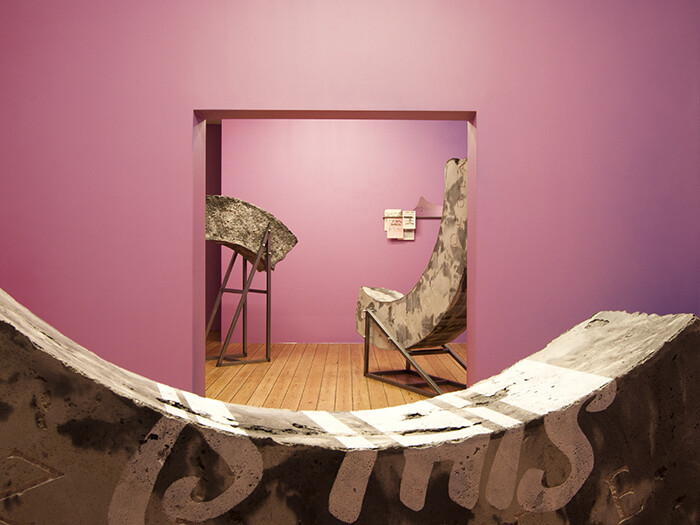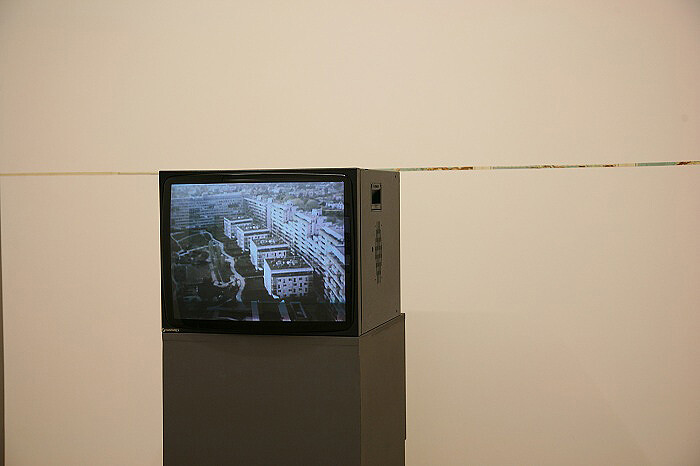Categories
Subjects
Authors
Artists
Venues
Locations
Calendar
Filter
Done
January 21, 2015 – Review
Ivan Argote’s "Reddish Blue"
Adam Kleinman

The archive is dated; we now live in the age of footnoted fictions, as artists, writers, politicians, and technocrats each try to shape political reality through semi-plausible myths… each “based on a true story.” As such, it might be time to start weighing the techniques of Hito Steyerl, or Ben Lerner’s speculative political fictions that change the world “depending on its arrangement into one narrative or another” against the not dissimilar disinformation tactics of political theater found in say, Putin’s éminence grise, Vladislav Surkov, and his use of multiple false flag operators to confuse any cogent narrative of so-called “reality.” For this review, let’s take Ivan Argote’s “Reddish Blue” as the opening salvo for this discussion.
As the title suggests, the exhibition is based on the color purple, and several of the gallery walls are painted appropriately. To learn why, visitors are presented with a slideshow that apes PowerPoint and silent movies by projecting 80 expository intertitles. It begins, “I think it’s true…” and from there, a series of narratives that may or may not be true follow. These accounts more or less intertwine as the artist uses anecdotes to tell personal and familial histories, but the crux of it all …
December 17, 2012 – Review
Mona Vătămanu & Florin Tudor’s “Geometric Analogies”
Natasha Ginwala

An anti-censorship quote from the first century claims that when paper burns the words fly away. But what happens when the paper itself is granted flight? In the film Manifestul (Manifesto, 2005) a hand appears from the edge of a balcony and releases a cluster of pages. They swirl about, filling the frame as a breeze forms an accidental background score. Several of Mona Vătămanu and Florin Tudor’s films, including this one, are made at an in-between time—neither day nor night—but a gray hour that holds the cinematic image in a state of aporia. It is in this suspended space that temporal gestures find grounding and a certain materiality—be it in the carrying of dust (Praful / The Dust, 2006), covering the floor of an exhibition space with rust (The Path / Rust Ingots, 2009), or the painting of revolutionary scenes as acts of remembrance (the series “Appointment with History”).
Vătămanu and Tudor invent vulnerable architectures that draw upon the violently fragmented modernism of post-socialist Romania. Their articulations of loss within Ceaușescu’s dictatorship are conceived in conversation with places and things as “survivors” of history. However, rather than inhabiting chronological pathways, the artists’ works serve as a rehearsal ad infinitum.
Manifestul …